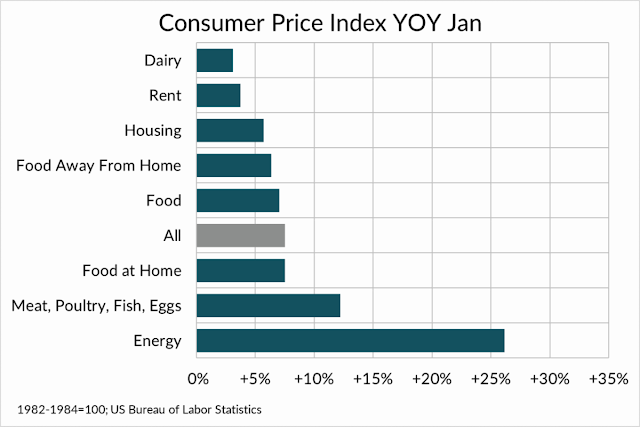It’s been one of those insane weeks…and it was a short work week in a short month. Let’s pray for the world and its people.
I hope you can find some comfort in these words of wisdom from a friend.
The past is where depression and regret live (thinking about what we wished we had done).
The future is where stress and anxiety live (worrying about what we have to do or what's going to happen).
The present is the safest place we can be. That’s why we should be in the present and appreciate the now.
And I hope this information shared by the National Milk Producers Federation and the International Dairy Foods Association keeps you motivated to produce some of the best-tasting, most-nutritious and economical foods in the world. This is important during the current inflation crisis.
Source: National Milk Producers Federation
The most recent Consumer Price Index is reporting the fastest retail price increases in costs in 40 years, with a hot economy and tight supply chains pushing up everything from cars to coffee. When consumers and media outlets focus their frustration, it tends to be on the prices that are most widely noticed. Gasoline is the best example. What other product routinely posts its price on big signs next to highways?
A gallon of milk is another one, as it is a product that is in 94% of households. You can safely assume that a big part of the consuming public knows exactly what milk costs and notices when it rises.
Source: International Dairy Foods Association
This is the most recent year-over-year Consumer Price Index covering overall inflation, food and beverage inflation, and dairy categories. A gallon of whole milk—currently the most popular variety in a jug--is going up, but it is in line with other foods and beverages and lower than overall inflation. Subcategories fare even better. Cheese costs to consumers have barely budged. Ice cream remains an affordable treat. And yogurt, butter, etc., remain compelling choices of affordable, high-quality nutrition.
So what’s going on with the inflation gap? A few things, according to the National Milk Producers Federation. For starters, dairy supply chains tend to be more local and predominantly domestic, meaning some factors driving price gains in imported goods don’t apply. Dairy farmers have also done a great job of keeping markets adequately supplied, even in a year of record dairy export sales.






No comments:
Post a Comment